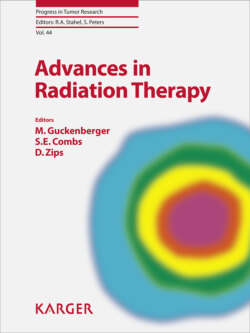Читать книгу Advances in Radiation Therapy - Группа авторов - Страница 24
На сайте Литреса книга снята с продажи.
T Cell Effects and T Cell-Engaging Therapy
ОглавлениеOne of the main immunological effects of irradiation is to facilitate T cell infiltration in tumours. Non-irradiated tumours often have a tumour-suppressive microenvironment with the T cells present located at the borders of the tumour without being able to exert their antitumour function. Irradiation can change this picture and T cells will enter the tumours and begin to be activated [57, 58]. This is the rationale for combining irradiation with T cell-engaging therapies. Chimeric antigen receptor T cells as well as T cell-engaging bispecific antibodies are able to transform every intratumoural T cell into an antitumour T cell irrespective of their T cell receptor specificity [82–84] so that the combination with irradiation might elicit additive or synergistic effects. Yet, the first preclinical data showed a dependency of response on initial tumour size with a negative effect of combination treatment on tumour control for some subgroups [85].
Fig. 1. Antitumour immune responses are dependent on neoantigen presentation by dendritic cells and dendritic cell activation leading to T cell activation and expansion. Tumour-targeting T cells have to enter the tumour and overcome the immunosuppressive tumour microenvironment. Different immunotherapeutic strategies alter this process at different stages and might be beneficial in combination with irradiation based on different conceptual ideas of interaction, as displayed.
